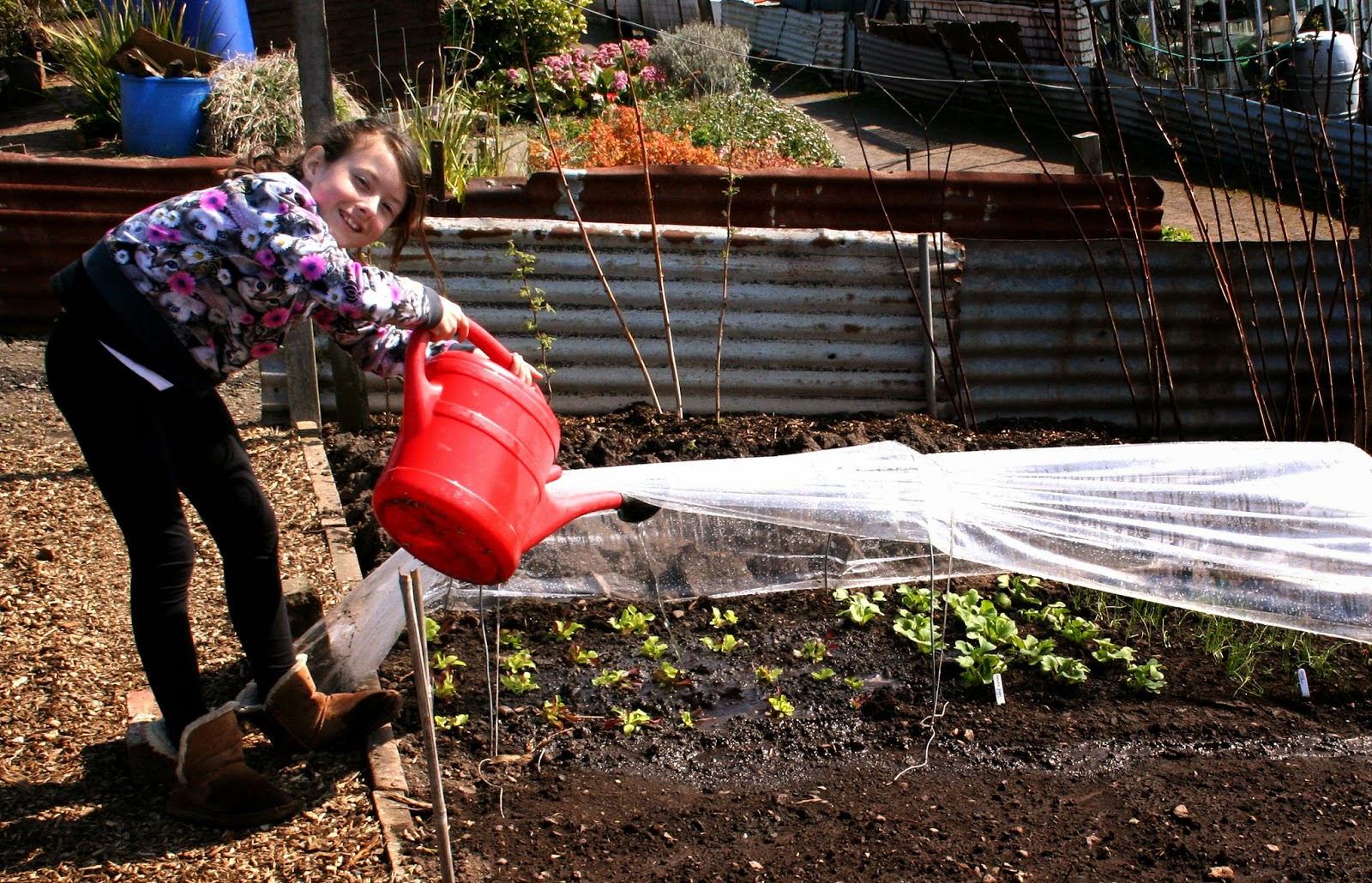A DAY ON THE ALLOTMENT
As the risk of frost
gets less, we can now start to sow those less hardy vegetables such as dwarf
French beans and runner beans direct into the soil, provided we are out of this
cold spell and the soil has warmed up. These can also be raised indoors from
seed to gain an extra couple of weeks, but I find the later outdoor sowings
soon grow rapidly once the warmer weather arrives. I got a bad result two years
ago with an indoor sowing of French beans when the poor quality of peat free compost
was so bad that all the seedlings rotted off. Outdoors, Dwarf French bean seeds
are spaced a few inches apart in a single row and then thinned to four to six
inches, but runner beans are planted around the base of a six foot tall wigwam
support which they can then twine around.
Broad beans are now
well established and starting to put on a bit of growth so now is the time to
put in some stakes and twine for support. Keep them weeded and keep on the look
out for blackfly on the growing points. Remove the growing points if they are a
problem.
Early peas are also
in need of support, even the lower growing Kelvedon Wonder which can reach four
feet tall. I use the prunings from my coloured stem border as the cornus and
salix get cut back to ground level every year at the end of March. The cornus
reached four feet long and the willow (Salix britzensis) grew nearly ten feet
last year, so is perfect for staking my peas after cutting back a wee bit. Peas
also suffer attacks from pigeons, so I protect them with a couple of rows of
black thread. It is an old fashioned trick but still works. Last year I lost my
Goji berry which was trained up a six foot fence, so I will now use this fence
for a sowing of Pea Alderman which will use the entire fence as it knows how to
grow tall.
 Now that family
feeding is just down to two people, there is precious little sense in growing
masses of cabbage and cauliflower that are all ready to eat over one month, so
I now grow them in small batches over the whole season. The first batch was
sown in March and is growing just fine, but now my next batch is ready to
succeed them. I will sow a small batch of cauliflower Clapton and cabbage
Kilaxy, both of which are clubroot resistant. This will be followed at the end
of the month with a sowing of cabbage Tundra to give me my autumn and winter
hardy cabbages.
Now that family
feeding is just down to two people, there is precious little sense in growing
masses of cabbage and cauliflower that are all ready to eat over one month, so
I now grow them in small batches over the whole season. The first batch was
sown in March and is growing just fine, but now my next batch is ready to
succeed them. I will sow a small batch of cauliflower Clapton and cabbage
Kilaxy, both of which are clubroot resistant. This will be followed at the end
of the month with a sowing of cabbage Tundra to give me my autumn and winter
hardy cabbages.
Potatoes are now
growing and in need of earthing up, which also helps to kill weeds.
Salads grown under
my low tunnels have been giving me some early fresh radish, spring onions and
lettuce leaves. They should continue for another month then the ground will be
used for another sowing of peas.
Rhubarb has also
been very plentiful this year as the long cool but dry spring seemed to suit it
just fine.
 Other crops are all
at an early stage but growth has been good on onions, leeks, turnip and now my
parsnips are appearing and will soon need thinning out.
Other crops are all
at an early stage but growth has been good on onions, leeks, turnip and now my
parsnips are appearing and will soon need thinning out.
Fruit crops are all
showing plenty of promise. However I am waiting to see if the cold snap at the
end of April has affected the fruit crop fertilisation of apples, pears,
cherries and peach.
I keep checking my
gooseberries for presence of sawfly maggots, but they are nowhere to be seen.
The ground
underneath the bushes has been regularly disturbed then mulched in spring which
must have helped to discourage them.
Wee jobs to do this week
Remove cordon
trained tomato sideshoots as soon as they are big enough to handle to retain
the plant strength for fruiting, and continue to feed every week with a high
potassium tomato fertiliser.
Greenhouse grapes
are also grown on upright rods just like a cordon with fruiting laterals
growing every ten inches or so up its length. Remove any lateral that is barren
and pinch out the growing point on all fruiting laterals at two leaves beyond
the fruiting bunch. Thereafter as new side shoots grow keep all of them tipped
after just one leaf otherwise the vine will take over the greenhouse at the
expense of grapes.
END


































